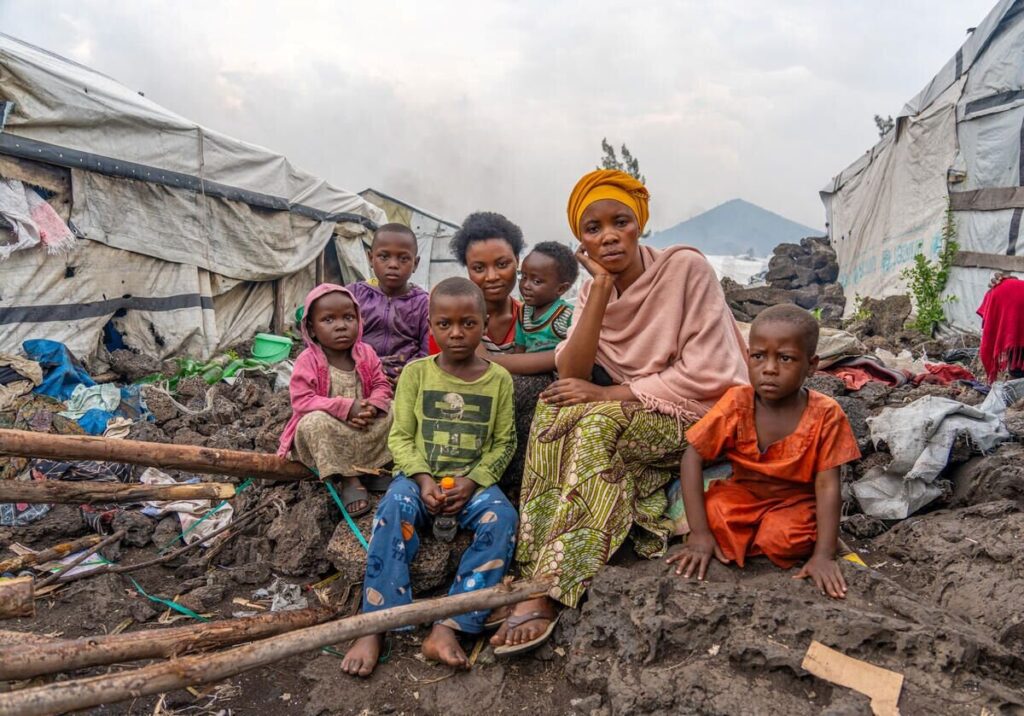WFP Alarmed at Soaring Hunger as More Flee Displacement Camps in Eastern DRC

KINSHASA – The United Nations World Food Programme (WFP) has partially resumed food assistance in parts of Goma, eastern Democratic Republic of the Congo (DRC), delivering vital nutrition supplies for the treatment of moderate acute malnutrition in children aged 6 to 59 months as three weeks of fighting continues to worsen access to food for the most vulnerable.
A recent U.N. World Food Programme market assessment found the price of staple foods in eastern DRC has skyrocketed, making it more difficult for families to put food on the table. The price of corn flour has risen by nearly 67%, while salt has shot up by about 43% and oil increased by up to 45%.
With major access routes blocked, and Goma International airport a critical humanitarian hub closed, the U.N. World Food Programme’s priority is to resume operations fully as soon as it is safe to do so.
‘’The longer we are unable to give food and emergency assistance to families affected by the conflict, the greater and more dire their needs are,” said Peter Musoko, the U.N. World Food Programme’s country director and representative in the DRC. “I do not want to see children and mothers sink deeper into hunger and severe malnutrition. We need the violence to stop so we can resume our humanitarian activities. The most vulnerable people in DRC cannot afford to be overlooked during this crisis.”
The U.N. World Food Programme-run UN Humanitarian Air Service (UNHAS), which provides humanitarians with critical access and support for lifesaving work across the country, urgently requires $33.1 million to sustain operations in the country this year. Without additional contributions, air operations could be suspended by the end of March 2025.
Here are the latest updates on U.N. World Food Programme operations in the DRC:
- WFP delivered over 125,000 pounds of nutritional commodities to health centers in Goma to support malnutrition treatment, reaching 11,000 malnourished children under 5 and pregnant and breastfeeding mothers.
- In North Kivu, the U.N. World Food Programme has reached 9,000 out of a target of 83,000 people with emergency food assistance. Security must improve for the U.N. World Food Programme to reach tens of thousands more of the most vulnerable populations at risk.
- The U.N. World Food Programme has resumed its support to the ongoing Mpox vaccination campaign in the health zones of Goma, Karisimbi and Nyiragongo, providing hot meals to more than 100 Mpox patients.
- U.N. World Food Programme warehouses have been looted in Goma and Bukavu. 70% of food stocks were stolen in Goma, and all humanitarian supplies could not be recovered in Bukavu. A new warehouse has been set up in Goma to continue lifesaving operations.
- The U.N. World Food Programme’s UNHAS operations continue to provide humanitarian access to the eastern provinces. In recent weeks, the fleet was relocated to Kalemie in Tanganyika, establishing a new operational hub for eastern DRC.
- In 2025, UNHAS has transported 2,464 passengers, including humanitarian workers relocated from Goma and Bukavu, and has delivered 50,700 pounds of essential light cargo across the country. UNHAS operations are critical to facilitate and enable humanitarians to do vital work.
- The U.N. World Food Programme urgently needs $397 million to maintain country-wide operations in the country for the next six months until July 2025.
The U.N. World Food Programme plans to reach 7 million of the most vulnerable women, men, and children in DRC with lifesaving food and nutrition assistance in 2025, and is working with U.N. agencies, NGOs, and government partners to address immediate needs and prepare for a potential large-scale response once conditions allow.
Download photos here
Download video footage here




